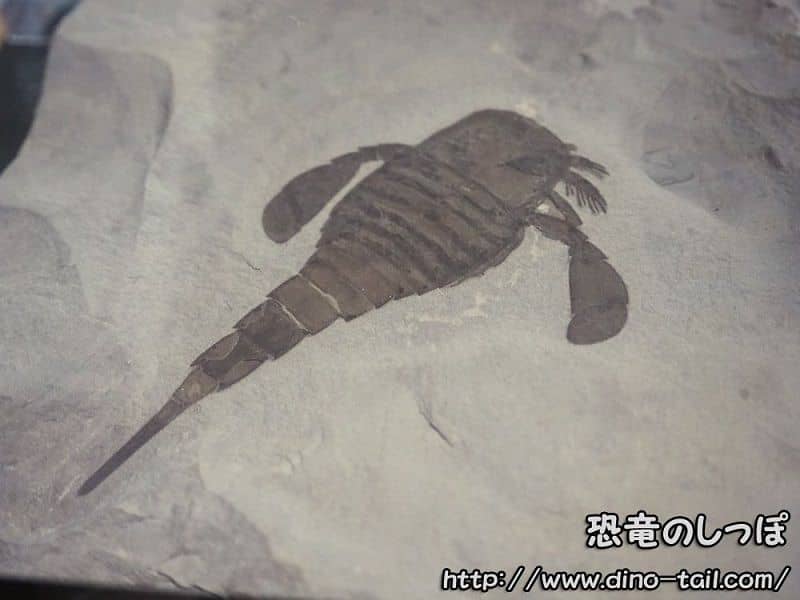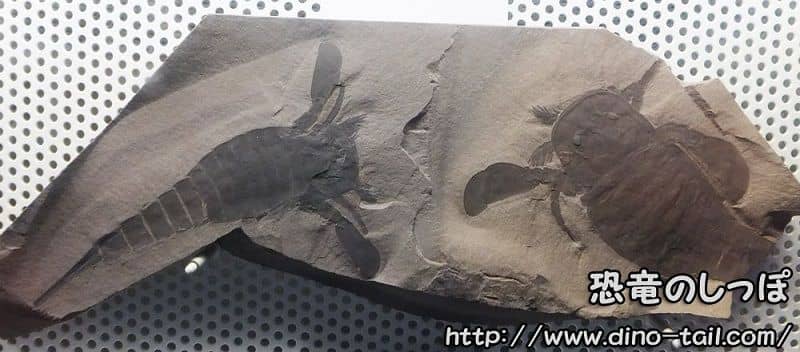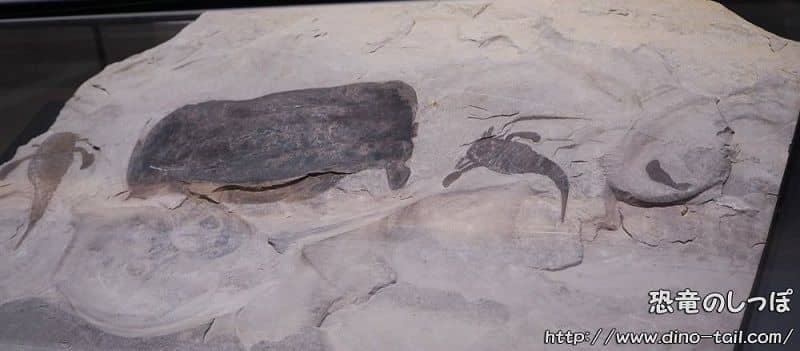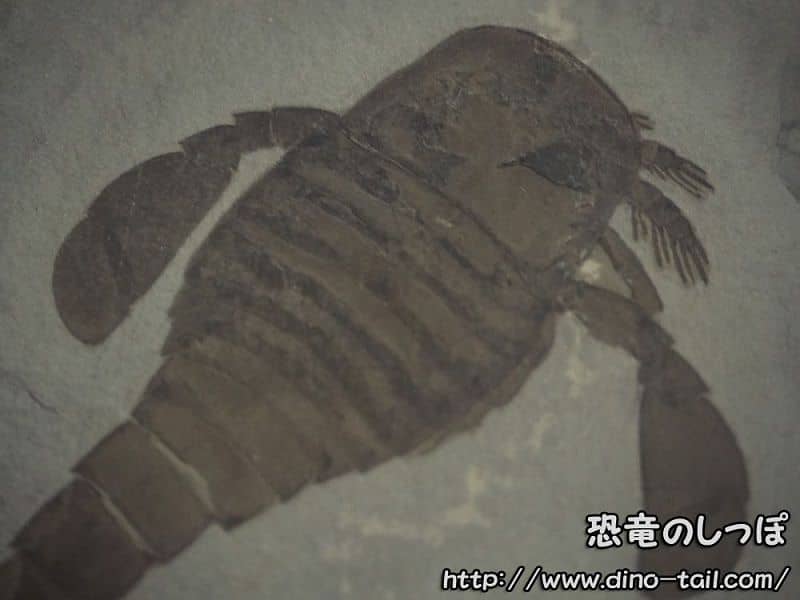About Eurypterus
| Scientific Name (Genus) | Eurypterus |
| Meaning of Name |
Wide wing (or wide fin)
eurys (wide) [Greek] + pteron (wing, fin) [Greek] |
| Classification | Arthropoda, Chelicerata, Eurypterida, Eurypteridae |
| Period | Silurian (approx. 432 - 418 million years ago) |
| Sub-classification / Species Name |
Eurypterus remipes
Eurypterus clevelandi Eurypterus cestrotus Eurypterus boyli, etc. |
| Year of Paper Publication | 1825 |
Features: Ruler of the Silurian Shallows
Eurypterus is a representative genus of sea scorpions that lived in the Silurian seas.
The Mystery of the Sea Scorpion Mass Deaths

My Collection
In the Silurian strata of New York State and Ontario, Canada, thousands of Eurypterus fossils are sometimes found clustered in one place. This suggests that they formed huge swarms.
The answer to why they died together is thought to lie in their habitat. They lived not in the open ocean, but in shallow, brackish lagoons where the salinity could change easily. It is speculated that a swarm that had gathered for mating or other purposes was washed ashore all at once by a giant storm and fossilized as they were.
Ecology and Anatomy

Collection of the Ibaraki Nature Museum
Most were 15-25 cm long, but some individuals reached up to 1 meter.
The rearmost pair of legs was modified into swimming paddles, which they used to move through the water. While suitable for gaining acceleration in water, they were not very fast, at about 3-4 meters per second. The other legs were used for walking, and it is thought that they preyed on trilobites and small armored fish on the seabed.
It is also known that there were structural differences between males and females (sexual dimorphism). In particular, females had a longer and larger operculum (genital plate) to protect their reproductive organs.
Habitat: Mainly Shallow Seas, but...

Collection of the Gunma Museum of Natural History
In 1989, a study was conducted on the respiratory system of Eurypterus.
While gills suitable for aquatic life were the main respiratory organs, it was found that they also possessed an auxiliary respiratory organ called Kiemenplatten (similar to that of modern crabs).
It was concluded that they could walk on land for short periods.
Eurypterus Stamp and Fossil Gallery



